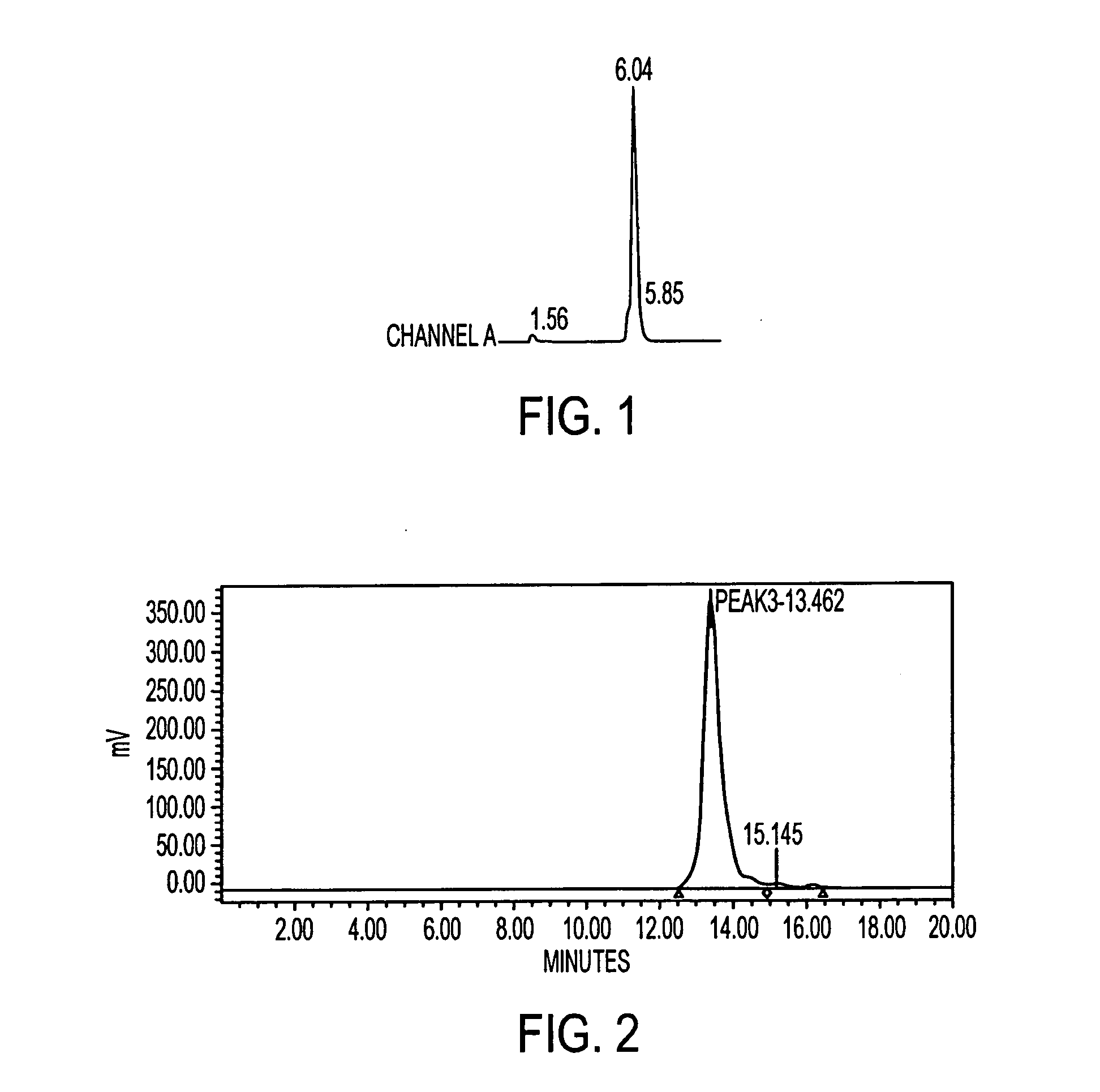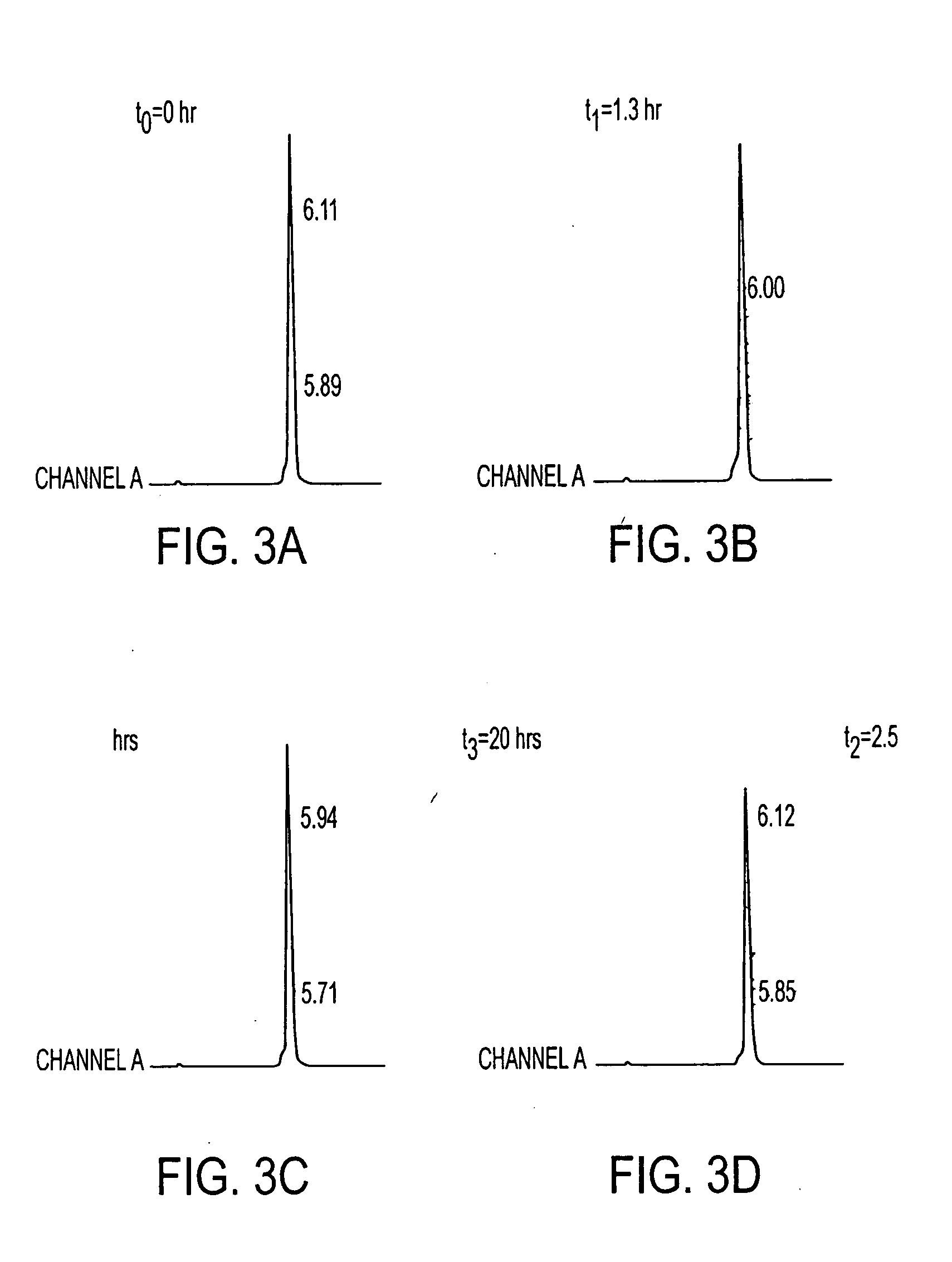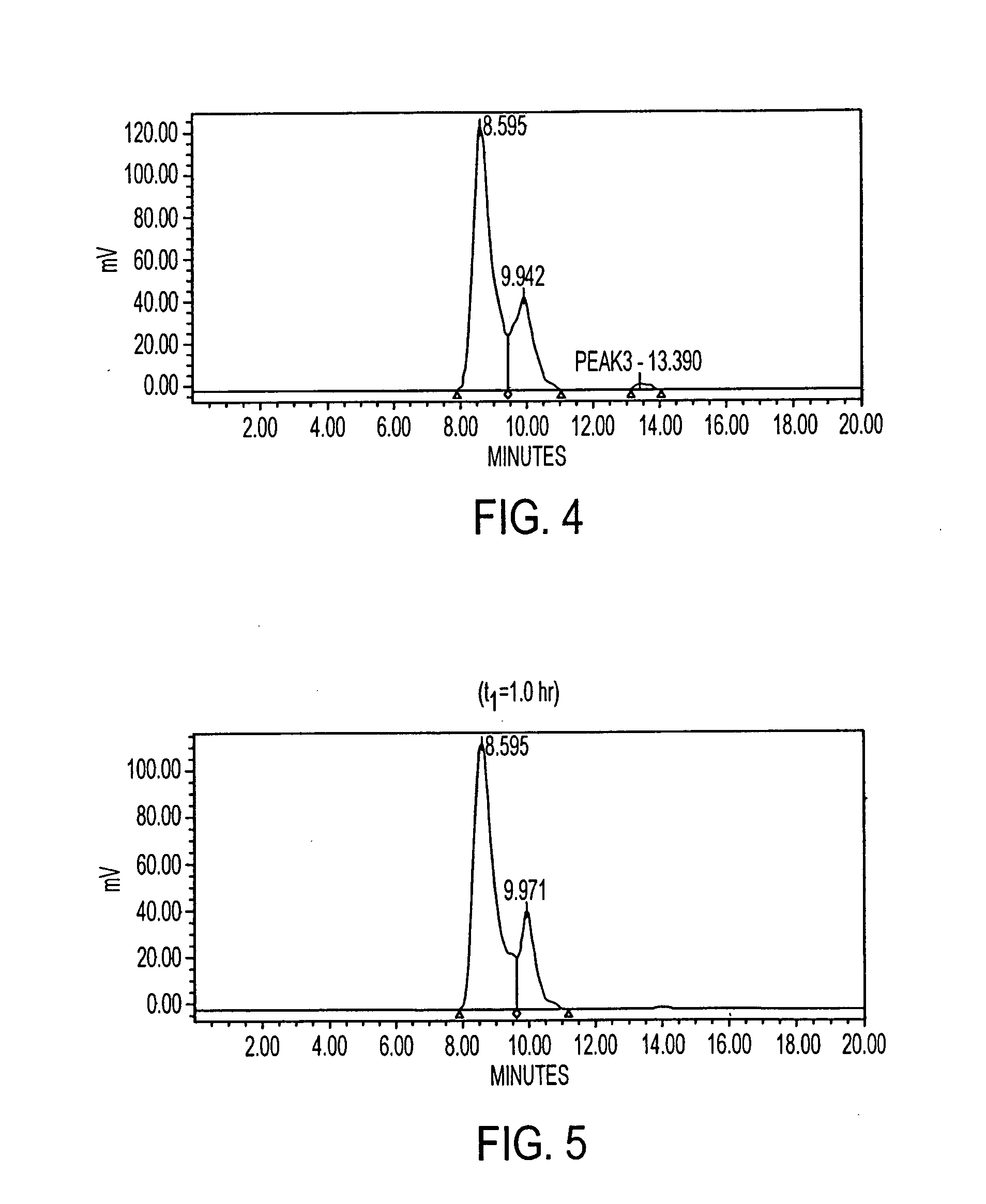D-amino acid peptides
- Summary
- Abstract
- Description
- Claims
- Application Information
AI Technical Summary
Benefits of technology
Problems solved by technology
Method used
Image
Examples
examples
[0289] IMP 281 Labeling
[0290] The following peptide was labeled with 111In: (MH+: 1361) [0291] DOTA-D-Ala-D-Lys(HSG)-D-Glu-D-Lys(HSG)-NH2
[0292] In addition, the peptide was tested, after labeling, for stability in human serum (previously frozen) over a period of 20 hrs at 37° C. The study showed that the peptide remained stable. IMP 281 was also tested for binding with the humanized antibody, m679×hMN14. The In-111 labeled peptide was analyzed both on the reverse phase and the size exclusion HPLC systems.
[0293] Synthesis of IMP 281
[0294] The peptide was synthesized (NB Ref. CN 2-34) by solid phase peptide synthesis on Rink Amide resin (2.0159 g, 0.7 mmol / g) using standard Fmoc synthesis methodology. The following amino acids (6 equivalents per coupling) were added in the order shown; Fmoc-D-Lys(Aloc)-OH, Fmoc-D-Glu(OBut)-OH, Fmoc-D-Lys(Aloc)-OH, Fmoc-D-Ala-OH and DOTA-tris(t-Butyl) ester. Each amino acid was double coupled with two hour couplings first using diisopropylcarbodiim...
PUM
| Property | Measurement | Unit |
|---|---|---|
| Length | aaaaa | aaaaa |
| Force | aaaaa | aaaaa |
| Magnetic field | aaaaa | aaaaa |
Abstract
Description
Claims
Application Information
 Login to View More
Login to View More - R&D
- Intellectual Property
- Life Sciences
- Materials
- Tech Scout
- Unparalleled Data Quality
- Higher Quality Content
- 60% Fewer Hallucinations
Browse by: Latest US Patents, China's latest patents, Technical Efficacy Thesaurus, Application Domain, Technology Topic, Popular Technical Reports.
© 2025 PatSnap. All rights reserved.Legal|Privacy policy|Modern Slavery Act Transparency Statement|Sitemap|About US| Contact US: help@patsnap.com



